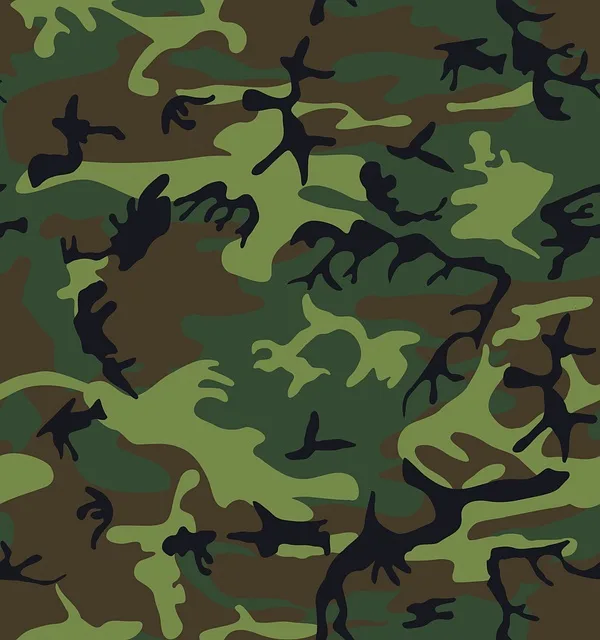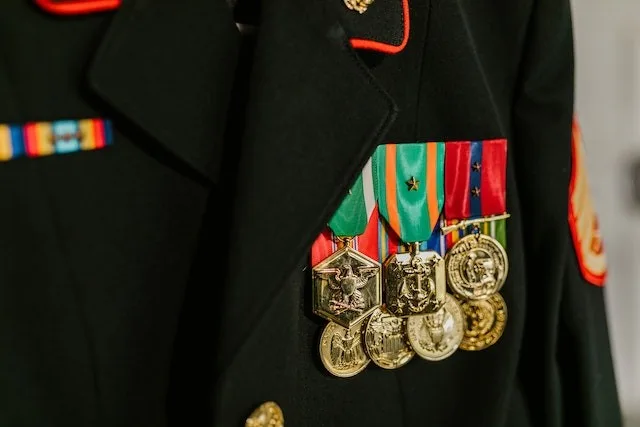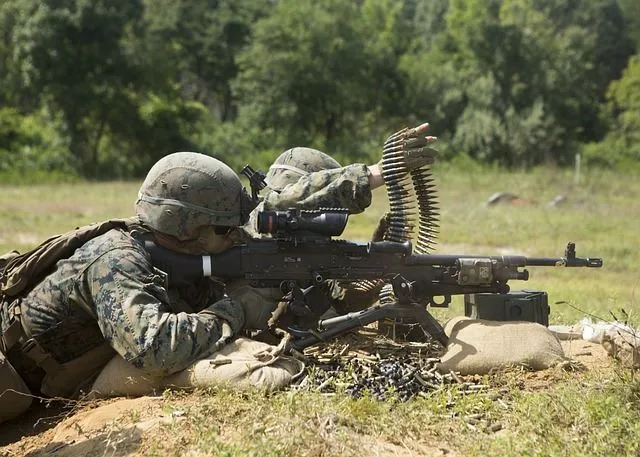Table of Contents
Introduction
In the world of armed forces, troops rely on their battledress for success. The Army Combat Uniform, with its camouflage design, is a necessity.
I have to tell you that Army Combat Uniform (ACU), since their introduction in 2004, have undergone several modifications to improve functionality and adapt to changing combat environments. From the introduction of flame-resistant fabrics to the incorporation of camouflage patterns tailored to specific terrains, these uniforms have constantly evolved to meet the demands of modern warfare. (Source: Army.mil)
I am Mohammed Ibrahim Anwar, a textile and apparel industry professional based in Chennai. Since 1997, I have been contributing my skills to the clothing sector. As I continue to rely on my experience, I support my clients and teammates in achieving higher targets at every milestone in this core necessity industry.
A full introduction to me can be found on my About Us page. In this article, we will delve into the details of Army Combat Uniforms, offering you valuable insights on the subject.
The Army Combat Uniform, also known as battledress, isn’t just any old uniform; it’s a symbol of strength, resilience, and adaptability for the armed forces. Whether you’re a soldier or an aspiring entrepreneur, this combat dress with its camouflage design holds secrets that can transform your outlook.
From field uniforms to dress uniforms, we’ll delve into every aspect of army attire that is worn by troops. So wave goodbye to boring khaki trousers and say hello to a whole new level of style.
This blog is an extension of my earlier blog title, “Types of Military Uniforms: Iconic Attire of Armed Forces” If you still have a hunger for information about uniforms, you may check my blog on the article “Stand Out with Style: Embrace the Diversity of Types of Uniforms”
Join me as I uncover the hidden potential behind the Army’s green service uniform and camouflage uniforms. Get ready for an adventure that combines military precision with an entrepreneurial spirit—because nothing beats an army combat uniform, also known as battledress, worn by the armed forces!
Evolution of Army Combat Uniforms
Historical Origins and Purpose of Battle Dress Uniforms
The history of army combat uniforms can be traced back to the early 20th century when the concept of battledress emerged. Initially, troops wore standard clothing that was not specifically designed for combat situations. However, as warfare evolved and became more complex, the armed forces recognized the need for specialized attire.
During World War I, the armed forces started experimenting with different types of battledress uniforms, including trousers, to help troops blend into their surroundings and gain a tactical advantage on the battlefield. These early iterations laid the foundation for what would eventually become known as battle dress uniforms (BDUs).
The transition from traditional battle dress to modern army combat uniform began in the 1980s. The new armed forces uniform was developed with a focus on efficiency and adaptability, taking into consideration the changing nature of warfare. One significant improvement was the inclusion of body armor compatibility, ensuring that troops could wear protective gear without compromising mobility.
The Transition to Modern Army Combat Uniform: Efficiency and Adaptability
One key aspect of modern army combat uniform, such as battledress or battle dress, is their ability to provide enhanced functionality while adapting to various environments. The introduction of the universal camouflage pattern revolutionized how troops could blend into different terrains seamlessly. This pattern effectively replaced older designs like jungle greens or water-repellent fabrics that were less versatile. Khaki clothing became the new standard.
Moreover, advancements in fabric technology have made today’s army combat uniform, also known as battledress, more durable and comfortable for troops than ever before. Soldiers can now perform their duties without being hindered by heavy or restrictive clothing. These modern uniforms incorporate features such as reinforced knees and elbows, multiple pockets for storing essential equipment, and adjustable waistbands for a better fit of trousers.
Understanding the Indian Army Combat Uniform: Symbolism and Identity
For armed forces around the world, including India’s military troops, combat uniforms, also known as battledress, go beyond practicality; they also serve as symbols of identity and pride. The Indian Army Combat Uniform, in khaki, reflects its rich heritage while embracing modern design elements. The uniform’s distinct olive-green color represents the country’s natural surroundings and allows soldiers to blend into various terrains prevalent in India.
The Indian Army Combat Uniform, including camouflage uniforms and khaki battledress, incorporates cultural symbols and insignia that honor the traditions and achievements of the armed forces. These symbols foster pride and camaraderie among troops, promoting unity within the ranks. Additionally, the uniform is designed to meet the specific requirements of different branches, such as the Air Force or ground troops, ensuring functionality in diverse operational scenarios.
The Design Process: Unveiling the Creation of Army Combat Uniforms
Behind the Scenes: The Collaboration of Military Experts and Designers
The creation of army combat uniforms, also known as battledress or service dress, involves a meticulous collaboration between military experts and designers. This partnership ensures that the khaki uniforms meet the specific needs and requirements of soldiers in various operational environments. Military experts provide valuable insights into the challenges faced by troops on the field, while designers bring their expertise in fabric selection, pattern design, and overall functionality.
This collaborative effort begins with extensive research conducted by both military experts and designers. Troops share their experiences and feedback on existing battledress, highlighting areas for improvement. Designers then analyze this information to develop innovative solutions that address these concerns. The goal is to create uniforms that troops can wear confidently.
Balancing Functionality and Aesthetics: Key Considerations in Uniform Design
When designing an army combat uniform, striking a balance between functionality and aesthetics is crucial. These battle dress uniforms must not only provide adequate protection but also instill a sense of pride among soldiers. To achieve this balance, designers take into account several factors, such as the use of khaki fabric and the design of the service dress.
One key consideration for soldiers in their army service uniform is the camouflage design. Camouflage patterns in battledress play a vital role in ensuring soldiers blend seamlessly with their surroundings during combat operations. Designers carefully select colors and patterns for the army green service uniform that match different terrains to maximize concealment.
Another important aspect is the choice of fabric for army combat uniform. The battledress needs to be durable, lightweight, and breathable to withstand harsh conditions on the battlefield. Innovations in fabric technology have led to the development of khaki materials that offer enhanced performance while maintaining comfort for extended periods. These fabrics are quick-drying, making them ideal for wear during combat situations.
To know the various fabrics available in the market check my blog titled “Types of Fabrics with Name – Little Known Factors That Could texture your decisions.“
Innovations in Materials and Technology for Enhanced Performance
Advancements in materials and technology have revolutionized army combat uniform design, making it more effective for soldiers on the battlefield. From improved camouflage patterns to water-repellent fabrics, these innovations greatly enhance soldier performance while wearing the battledress.
One notable breakthrough is the introduction of disruptive pattern material (DPM) in new camouflage uniforms. This pattern incorporates irregular shapes that break up an individual’s silhouette, making it harder for enemies to detect soldiers wearing combat dress. DPM has proven highly effective in various operational environments, enhancing the effectiveness of the army service uniform.
The integration of body armor into battledress has become a standard practice in khaki war uniforms. This ensures that soldiers have optimal protection without compromising mobility. The use of specialized fabrics and design techniques allows for the seamless incorporation of body armor without hindering soldiers’ ability to perform their duties in patterned combat uniforms.
Usually, the fabric used in this Army combat uniform would be twill fabric. I have two blogs exclusively on twill fabric which can give still more insights. They are “The Science Behind What is Twill Cotton Weave: Why It’s So Durable and Long-Lasting” and the other one is “Potential & magic of understanding what is cotton twill fabric used for, It’s types and available market qualities.“

Modern Army Combat Uniform: OCP and Beyond
In 2015, the United States Army made a significant change to its standard uniform by adopting the Operational Camouflage Pattern (OCP). This new army combat uniform, also known as the OCP Army Uniform, replaced the Universal Camouflage Pattern (UCP) that had been in use since 2004. The transition to the OCP marked a shift towards modernizing army attire for contemporary warfare. The OCP is known for its khaki colour and is a versatile dress for soldiers.
The introduction of the OCP Army Uniform, also known as the ACU dress, was driven by several factors. Firstly, it aimed to provide improved camouflage capabilities for soldiers operating in various environments. The OCP pattern features a blend of colours including dark brown, light green, and beige, which effectively blends with different terrains such as desert, woodland, and urban areas. This adaptability allows soldiers to remain concealed and enhances their effectiveness during missions in the colour war.
Moreover, the adoption of the Army Combat Uniform pattern aligns with lessons learned from Operation Enduring Freedom. It addresses feedback from soldiers who found the UCP ineffective in providing adequate concealment in combat situations. By incorporating these insights into its design, the modern army combat uniform, offers enhanced protection and reduces risks faced by troops on active duty. The new colour scheme, inspired by the Army Combat Uniform, further improves camouflage effectiveness in war zones.
One notable feature of the Army Combat Uniform is its open-collar design. Unlike its predecessor’s mandarin collar which often caused discomfort and restricted movement around the neck area, soldiers now benefit from increased comfort and flexibility during operations. This modification contributes to improving overall soldier performance by eliminating unnecessary distractions or discomfort. The Army Combat Uniform is an essential part of a soldier’s dress during the war, with its pattern designed for effective camouflage.
Cargo pockets have been strategically placed on both sides of the army service uniform trousers to allow for easy access to essential items while on duty. These spacious pockets enable soldiers in their field uniform to carry necessary equipment such as maps, compasses, communication devices, or medical supplies conveniently.
The significance of this transition extends beyond just aesthetics or functionality; it has tangible benefits for military personnel. Studies have shown that modern army combat uniforms, with their improved camouflage capabilities and enhanced color and pattern, can positively impact soldier performance. The OCP dress increases soldiers’ confidence and situational awareness, leading to enhanced effectiveness in the field.
Furthermore, the adoption of the OCP Army Uniform demonstrates the military’s commitment to continuously evolving its dress and pattern to meet the demands of modern warfare. This dedication to innovation ensures that soldiers are equipped with state-of-the-art gear and color, empowering them to carry out their duties effectively.
Embracing the Army Combat Uniform: Fit, Comfort, and Personalization
Tailoring the Perfect Fit: Importance of Properly Fitted Uniforms
A well-fitting army combat uniform is crucial for soldiers in war. Comfort and functionality, as well as the right dress pattern and color, are paramount. Ill-fitting uniforms can hinder mobility and compromise performance in the field. That’s why tailoring the perfect fit is essential.
The army combat uniform is designed with adjustable features to accommodate various body types, allowing soldiers to customize their fit. They can adjust the waistbands, sleeve lengths, and pant legs to ensure comfort and freedom of movement during critical operations. This ensures that the dress pattern and color of the uniform are suitable for all soldiers in times of war.
Properly fitted war uniforms with the right dress pattern also enhance safety by preventing the loose fabric from getting caught on equipment or impeding movement during combat situations. A snug yet flexible fit enables soldiers to perform their duties effectively while maintaining optimal protection.
Prioritizing Comfort: Features and Fabrics for Long Hours in the Field
Spending long hours in the field during war requires a combat uniform that prioritizes comfort without compromising durability. The army combat dress uniform achieves this balance through carefully selected fabrics and innovative design features, including a strategic pattern.
The camouflage pattern of the military dress serves both functional and aesthetic purposes in war. It helps soldiers blend into their surroundings while providing essential concealment on the battlefield. The camouflage design ensures that soldiers remain less visible to adversaries, increasing their chances of carrying out missions successfully in war.
To withstand the rigors of war, army combat uniform are made from durable materials such as ripstop or twill in nylon or cotton blend fabrics. These fabrics offer resistance against tears and abrasions commonly encountered during military operations. The choice of fabric is crucial in ensuring that the uniforms can endure the harsh conditions of battle, allowing soldiers to focus on their mission without worrying about their clothing. The dress pattern of these uniforms is designed to provide camouflage and blend in with the surrounding environment, further aiding in the soldiers’ ability to remain undetected and protected on the battlefield.
Moisture-wicking properties in the army service uniform keep soldiers dry by drawing sweat away from the skin, preventing discomfort caused by excessive perspiration. Ventilation features in the field uniform further aid in temperature regulation during intense physical activity.
Personal Touch: Incorporating Insignias and Patches
Personalization plays a significant role in fostering camaraderie within military units during times of war while showcasing individual achievements and affiliations. The army combat uniform allows soldiers to incorporate insignias, patterns, and patches that hold personal significance, such as a war pattern or dress.
Insignias, such as rank badges and unit crests, identify a soldier’s position within the armed forces hierarchy. These symbols of authority and expertise instill a sense of pride and accomplishment in soldiers wearing their field uniform or dress uniform during war.
Patches, whether on a field uniform or dress uniform, allow soldiers to proudly showcase their unit affiliation and commemorate important events during times of war. These visual representations of shared experiences and accomplishments strengthen the bonds among comrades in a pattern that is unique to each individual.
The ability to personalize war uniforms not only boosts morale but also facilitates quick identification on the battlefield. Soldiers can readily recognize each other based on these distinctive pattern markings on their dress, promoting effective communication and coordination during missions.

The Symbolism of Insignias and Patches
Understanding the Meaning Behind Insignias on Army Combat Uniforms
Army combat uniform, also known as wardresses, are not just a standard set of clothing for soldiers; they serve as a visual representation of their achievements, skills, and rank in the pattern of war. One significant aspect that adds depth to these uniforms is the presence of insignias and patches. These small emblems hold great significance, conveying important messages about the wearer’s accomplishments and affiliations in the context of war.
Commemorative Patches: Recognizing Achievements and Missions
One of the primary purposes of patches on army combat uniform is to commemorate specific achievements or missions, such as completing specialized training programs or participating in notable military operations. These patches, acting as badges of honor, symbolize the soldier’s dedication and expertise in areas like marksmanship or medical skills.
Uniting Soldiers: The Role of Patches in Building Camaraderie
In addition to recognizing individual achievements, patches play a crucial role in building camaraderie among soldiers. Wearing field uniforms with similar insignias fosters a sense of belonging and solidarity within units. It creates an instant bond between soldiers who have served together or shared common experiences.
When soldiers see fellow comrades wearing the same patch on their dress uniforms, it serves as a reminder that they are part of something greater than themselves—a team that has worked together towards a shared mission. The pattern of the patches reinforces this sense of unity.
The placement and design of these patches on the field uniform also contribute to unit cohesion during the war. For instance, the left sleeve often displays unit patches that represent the soldier’s affiliation with specific divisions or regiments. This visible display not only helps identify individuals with their respective units but also reinforces unity within those groups wearing the dress uniform.
Moreover, in times of war, certain symbols on army combat uniforms, such as rank insignia, indicate the hierarchy and authority within the military. These symbols can be found on jackets, shirts, patrol caps, and hats, allowing soldiers to recognize and respect their superiors. This pattern of recognition is crucial for maintaining a structured chain of command essential for effective military operations.
The appearance and patterns of insignias on army combat uniform during the war are carefully designed to convey meaning while adhering to practical considerations. For example, patches are typically sewn onto dress clothing or attached using Velcro, ensuring they stay securely in place during rigorous activities. The choice of colors and symbols often reflects the unit’s history or mission in war, adding another layer of significance.
The Psychological Impact of Army Combat Uniforms
A. The Effect of Uniforms on Soldier Confidence and Mental Preparedness
Army combat uniform play a significant role in shaping the confidence and mental preparedness of soldiers during war. When soldiers put on their combat uniforms, they undergo a transformative experience that instills a sense of purpose and identity, as well as a sense of commitment to serve and protect. The dress becomes more than just clothing; it becomes a symbol of their commitment to serve and protect in times of war.
Wearing the army combat uniform during war boosts soldier confidence by creating a psychological barrier between them and the dangers they face on the battlefield. The dress serves as a tangible reminder that they are part of something greater than themselves, contributing to a collective mission. This sense of belonging enhances their mental preparedness for the pattern of war, allowing them to focus on their duties without distraction or self-doubt.
B. Harnessing the Power of Dressing for Glory: How Uniforms Influence Behavior
The power of dressing for war and glory cannot be underestimated. These patterned uniforms have been meticulously designed to evoke feelings of strength, discipline, and professionalism in soldiers. The visual impact alone can inspire soldiers to embody these qualities both on and off the battlefield.
War uniforms play a vital role in influencing behavior during military operations. The dress code sets clear expectations for soldiers’ conduct and performance, instilling discipline and accountability. This pattern of responsibility enhances decision-making skills under pressure, ensuring that soldiers act in accordance with their training and uphold military values.
Furthermore, in times of war, army combat uniform serve as a pattern for soldiers to wear. These uniforms represent bravery, resilience, and dedication. By donning these dress, soldiers not only project an image of strength but also internalize those qualities within themselves. This symbiotic relationship between appearance and mindset helps shape behavior in alignment with military principles.
C. The Connection Between Uniforms and Team Cohesion
Uniformity is crucial in building team cohesion within the military ranks during war. Army combat uniforms create a visual pattern that unifies soldiers and reinforces their sense of belonging to a collective entity. When soldiers wear the same dress, it eliminates external differences and emphasizes their shared purpose, fostering a strong bond among team members.
The connection between uniforms and team cohesion extends beyond mere aesthetics. Uniforms promote a sense of equality among soldiers, regardless of rank or background. This egalitarian environment encourages collaboration, trust, and mutual respect within units. Soldiers perceive themselves as part of a larger whole, working together towards a common objective. The dress and pattern of the uniforms play a significant role in fostering this sense of unity.
In addition to promoting unity within units, army combat uniform in times of war also facilitate identification and recognition among different branches of the military. This enables seamless coordination during joint operations and enhances inter-branch cooperation. The shared visual identity provided by these uniforms strengthens the overall effectiveness and efficiency of military operations, ensuring that soldiers are easily identifiable on the battlefield. The dress pattern of the uniforms plays a crucial role in this process.
Conclusion
In conclusion, the evolution of the Army Combat Uniform during war has been a fascinating journey. From their humble beginnings to the modern dress designs we see today, these uniforms have undergone significant changes in pattern to meet the needs of our soldiers.
The design process behind Army Combat Uniforms during the war is a meticulous one, where every detail of the dress pattern is carefully considered. The goal is to create a uniform that not only provides functionality but also instills a sense of pride and identity in our soldiers.
Modern Army Combat Uniform, such as the Operational Camouflage Pattern (OCP), have revolutionized war dress. These customizable uniforms are designed for comfort and allow soldiers to express their individuality through personalized patches and insignias.
Beyond their practicality in war, Army Combat Uniform holds symbolic meaning. Insignias and patches on these uniforms represent achievements, affiliations, and values. They serve as reminders of the dedication and sacrifice made by our brave men and women in uniform. Additionally, the pattern of the dress is carefully designed for camouflage and protection in combat situations.
It’s important to recognize the psychological impact that wearing an Army Combat Uniform dress with its distinct pattern can have on both wearers and those who encounter them. These uniforms command respect, inspire confidence, and foster a sense of unity among troops.
As you consider your own role in supporting our military personnel, remember that investing in quality Army Combat Uniforms, such as the dress and pattern, not only ensures their comfort but also demonstrates your commitment to their well-being. By providing them with reliable gear, like the dress and pattern, you contribute directly to their effectiveness on the battlefield.
Now that you understand the significance of Army Combat Uniforms, take action by exploring options for personalizing your own dress or supporting organizations that provide assistance to military personnel in need of a pattern.
If you find value in this blog and it inspires you to start sharing your thoughts on uniforms, we could be in touch by mail. And do share your ideas on [email protected] I wish you great luck on your current projects, and we will catch up soon.
FAQs
Can I customize my Army Combat Uniform?
Absolutely! Modern dress uniforms, like the OCP, allow for customization through patches and insignias. You can showcase your achievements or affiliations proudly on your field uniform. The pattern of the OCP provides a stylish and functional backdrop for displaying your patches and insignias.
Are Army Combat Uniform comfortable?
Yes! The design process takes into account comfort factors such as fit and fabric choice, ensuring that soldiers can perform their duties without discomfort in both their dress uniform and field uniform. The pattern of the uniforms is also carefully considered.
What do the insignias and patches on Army Combat Uniform represent?
Insignias and patches on a military field uniform represent achievements, affiliations, and values. They serve as symbols of dedication and sacrifice made by our military personnel. The pattern and design of these insignias and patches are carefully chosen to reflect the importance of these accomplishments and affiliations. Wearing the appropriate dress uniform is a way for military personnel to proudly display their achievements and honor their commitment to serving their country.
How do Army Combat Uniforms impact soldiers psychologically?
These uniform patterns instill a sense of pride, unity, and confidence in wearers. They also command respect from others, contributing to a positive psychological impact.
How can I support military personnel through Army Combat Uniforms?
By investing in quality uniforms or supporting organizations that provide assistance to military personnel, you contribute directly to their well-being and effectiveness in service. These contributions play a crucial role in maintaining the pattern of support for our armed forces.


